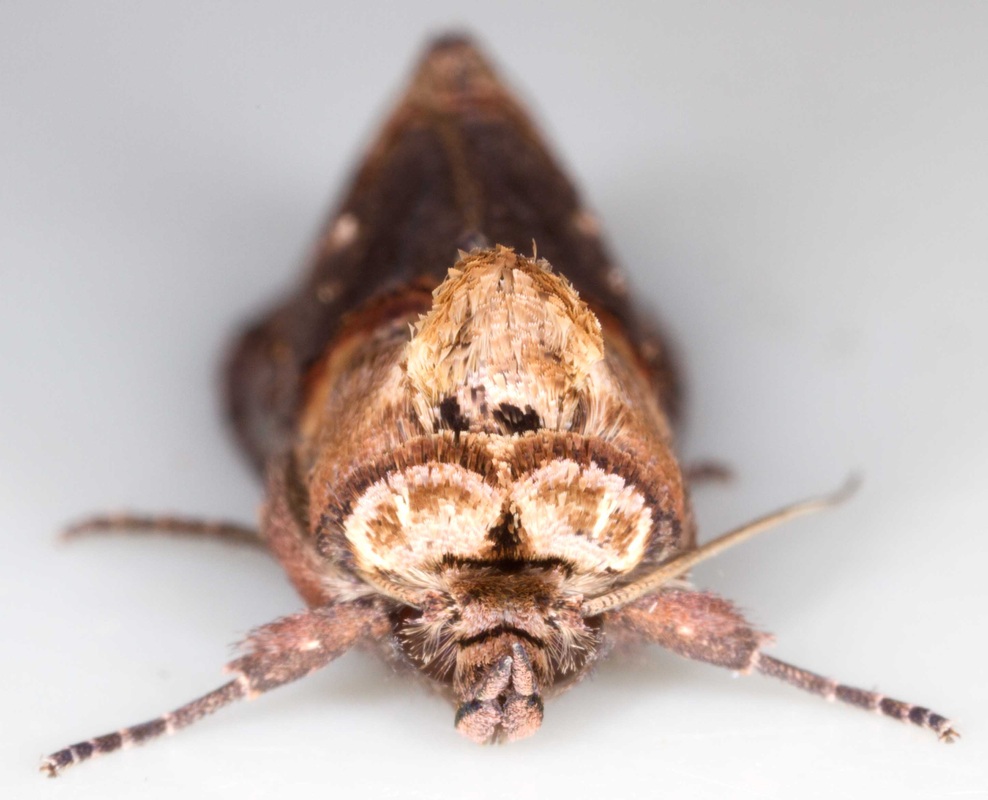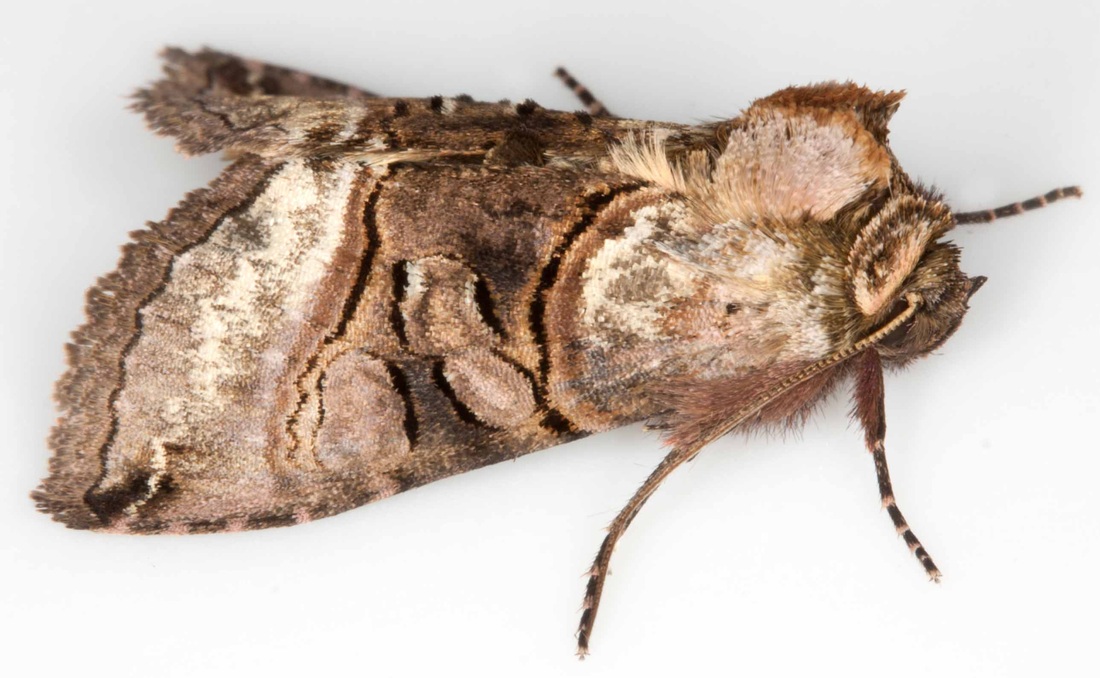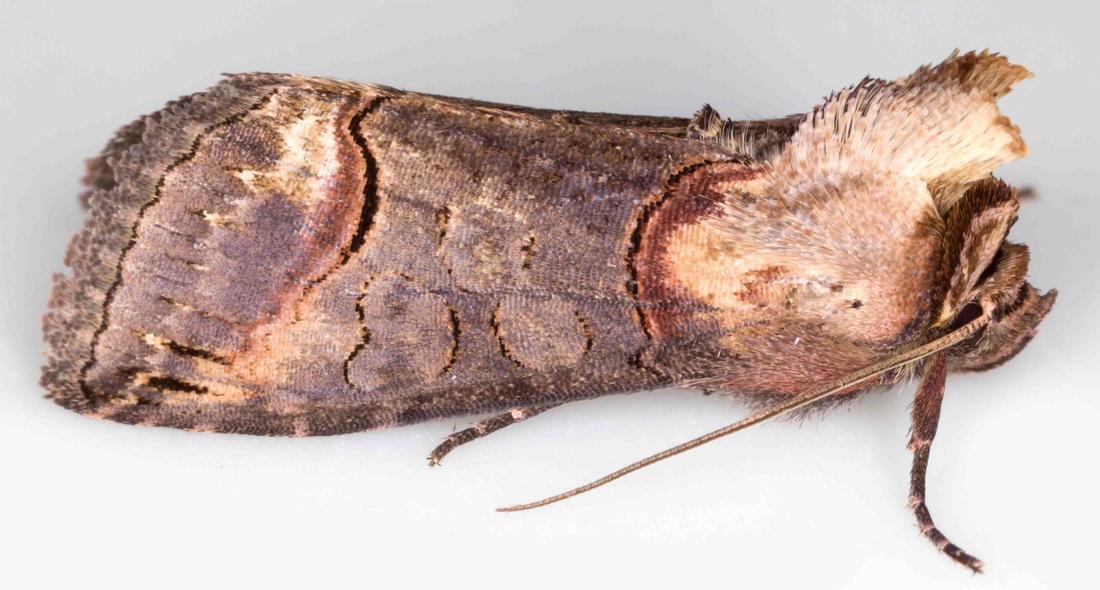Abrostola
|
Both Abrostola species show patagia with pale submarginal rings, giving the appearance of spectacles in anterior view and giving rise to their English names. Both also have the forewing divided into basal, median and terminal areas by dark subbasal and postmedian lines; large dark-outlined oval and kidney marks, the former of which is more or less confluent with a similar mark (referred to in MBGBI10 as a claviform stigma, but which is more like a secondary orbicular stigma in shape and position); and a prominent pale-sided thoracic crest. Both species show some variation in the forewing ground colour and in the degree of contrast between the median fascia and the rest of the forewing. Most can be identified reliably on external features. There are no clear male genital differences between the species in the images shown at Moth Dissection and I have not been convinced of any differences from the specimens I have examined so far. I have not yet obtained any females for genital dissection and females are not shown at Moth Dissection.
|
Forewing
1. Basal area colour: silvery-grey in A.tripartita, pale reddish-straw n in A.triplasia.
2. Contrast between basal and terminal area colour: similar colour in A.tripartita, basal area noticably paler in A.triplasia.
3. Black marks at apex: In A.tripartita a broad diagonal black mark at the apex is cut by the whitish subterminal line; in A.triplasia 3 short black streaks run along the veins proximally from the straw-coloured subterminal line (the most costal of these 3 is usually short and may be indistinct). Be aware, however, that the black mark in A.tripartita may be more prominent at the veins and is sometimes extended along the veins for a short distance; and that A.triplasia may have a dark apical smudge which is cut by the pale subterminal line.
4. Outline of stigmata: bold in A.tripartita, fine in A.triplasia.
5. Confluence of the 2 oval marks: in A.tripartita more or less confluent so that the kidney mark appears the smaller of 2 marks; in A.triplasia only a little connected so that the outline is more figure of 8 and the kidney mark appears the larger of 3 marks.
6. The median fascia usually appears broader in A.triplasia than in A.tripartita, but this seems somewhat variable and I have not yet found a reliable measurement that will consistently separate the species. However - in A.tripartita the narrowest distance between the black antemedian and postmedian lines is shorter than the distance between the antemedian line and the wing base, while in A.triplasia these distances are about the same. A secondary effect of this is that the distance between the anterior border of the oval and the antemedian line is often much shorter in A.tripartita (and they may touch, as in the example shown here); similarly the posterior border of the kidney mark is usually closer to the postmedian line in A.tripartita.
1. Basal area colour: silvery-grey in A.tripartita, pale reddish-straw n in A.triplasia.
2. Contrast between basal and terminal area colour: similar colour in A.tripartita, basal area noticably paler in A.triplasia.
3. Black marks at apex: In A.tripartita a broad diagonal black mark at the apex is cut by the whitish subterminal line; in A.triplasia 3 short black streaks run along the veins proximally from the straw-coloured subterminal line (the most costal of these 3 is usually short and may be indistinct). Be aware, however, that the black mark in A.tripartita may be more prominent at the veins and is sometimes extended along the veins for a short distance; and that A.triplasia may have a dark apical smudge which is cut by the pale subterminal line.
4. Outline of stigmata: bold in A.tripartita, fine in A.triplasia.
5. Confluence of the 2 oval marks: in A.tripartita more or less confluent so that the kidney mark appears the smaller of 2 marks; in A.triplasia only a little connected so that the outline is more figure of 8 and the kidney mark appears the larger of 3 marks.
6. The median fascia usually appears broader in A.triplasia than in A.tripartita, but this seems somewhat variable and I have not yet found a reliable measurement that will consistently separate the species. However - in A.tripartita the narrowest distance between the black antemedian and postmedian lines is shorter than the distance between the antemedian line and the wing base, while in A.triplasia these distances are about the same. A secondary effect of this is that the distance between the anterior border of the oval and the antemedian line is often much shorter in A.tripartita (and they may touch, as in the example shown here); similarly the posterior border of the kidney mark is usually closer to the postmedian line in A.tripartita.
Page published 23/05/2014



